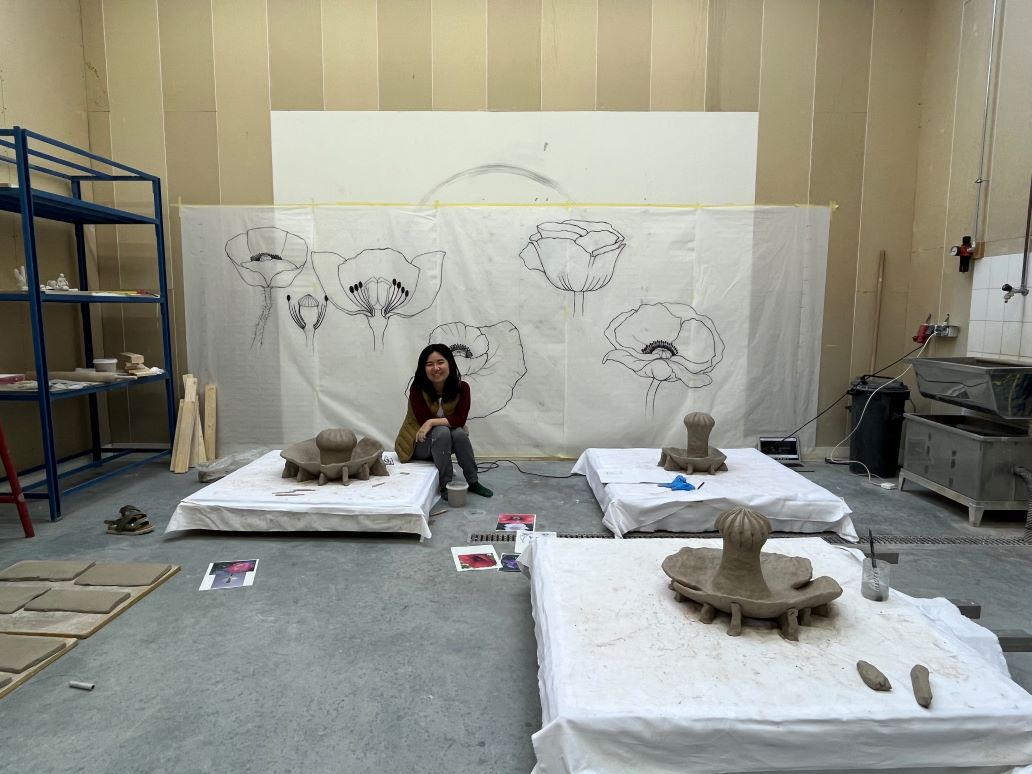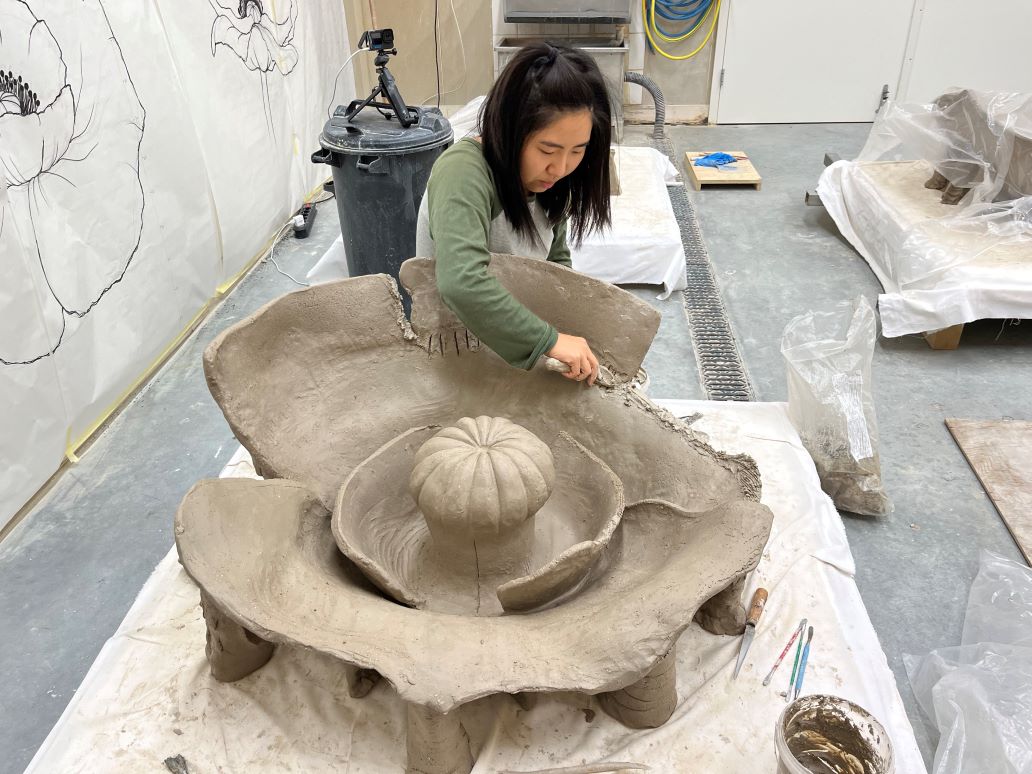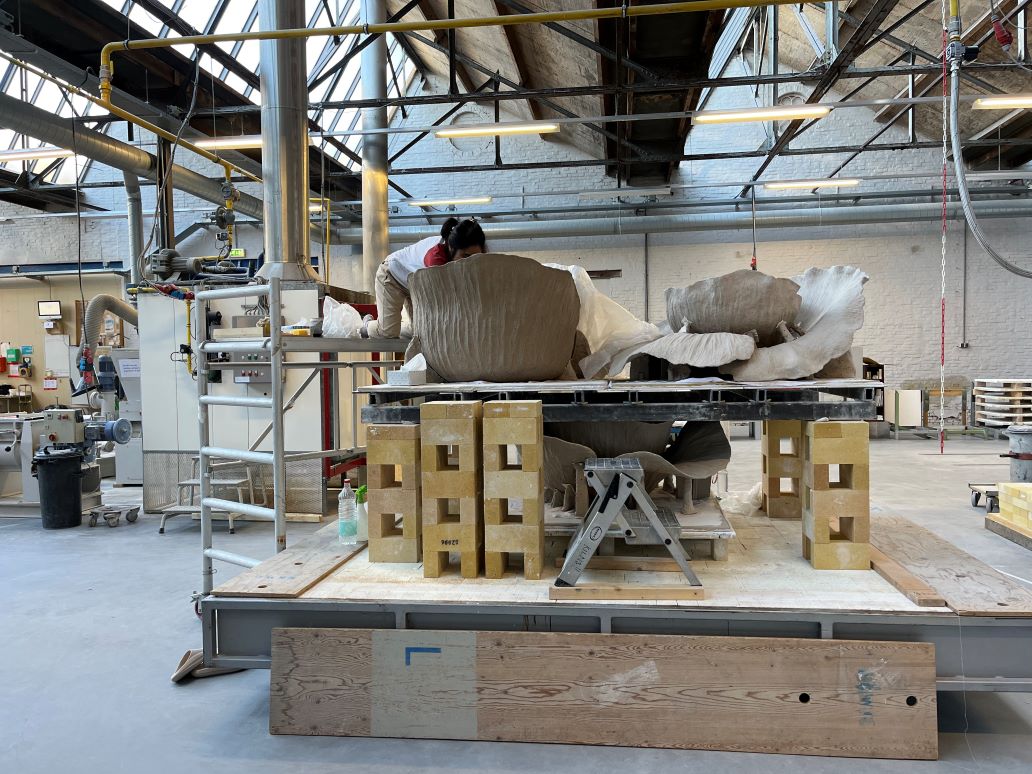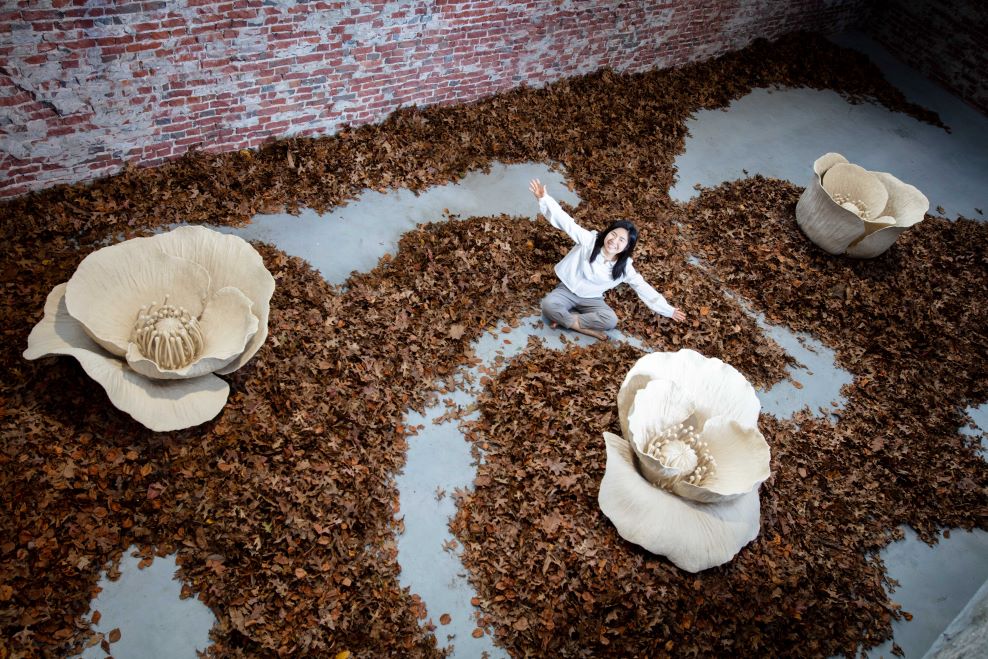Artists
Photo Credit: NIU Chun-Chiang
Chiao-Chih Julia Lu
Chiao-Chih Julia Lu
| Location | Netherlands / Oisterwijk |
|---|---|
| Residency | Sunday Morning, European Ceramic Work Centre (EKWC) |
| Year of the Grant | 2022 |
| Work | FLORA |
| Personal Website | Chiao-Chih Julia Lu's Personal Website |
She has participated in several prestigious artist residencies, including the Yingge Ceramics Museum, Tainan Mizuiro Workshop in Taiwan, European Ceramic Work Centre in the Netherlands, Shigaraki Ceramic Cultural Park in Japan, and Medalta in Canada. Her work has been featured in various solo and group exhibitions across Taiwan, the USA, Japan, and the Netherlands.
Her artworks invite viewers to reconsider the relationships among humanity, nature, and art. Drawing inspiration from architecture, botany, ecology, ethology, and cultural anthropology, she aims to illuminate the essence of life and push the boundaries of art. By consistently experimenting with various approaches and forms—including painting, ceramics, installation, sound, participatory art, and mixed media art—she explores new dimensions of creative expression.
Artist Statement:
The story behind my residency at EKWC dates to 2019, when I had the honor of participating in the Yingge Ceramic Museum’s “Tableware Exchange Project.” In this collaborative art initiative, we explored the aesthetic dimensions of the emotional connections people have with ceramic objects in their daily lives. After dedicating 6 months to the project, I found my thoughts increasingly focused on ontological and epistemological questions in contemporary art, such as how it is presented and the issues it seeks to address.
I believe that while the artist’s act of observing the world is a lifelong, if not endless, pursuit, each moment of observation is fleeting. It is this tension between permanence and ephemerality in contemporary art that inspires me to create. As a result, I chose ceramics as my primary medium.
During my residency at the Yingge Ceramics Museum in 2021, I embraced the challenge of creating large-scale ceramic sculptures on-site for the first time. Working with clay, the simplest and most natural medium from the earth, allowed me to engage in a daily dialogue with both my body and the material. Through the intensity of this labor, I reflected on the meaning of coexistence between humanity and nature.
The COVID-19 pandemic provided me with an opportunity to reflect on myself and deepen my familiarity with ceramics. At the end of 2022, as the world was beginning to recover from the pandemic, I decided to apply a residency at the European Ceramic Work Center (EKWC) in the Netherlands. I was aware that the Netherlands is famous not only for its tulips but also for being the world’s largest flower trading center. During my residency, I hoped to explore the local botanical and architectural scenes.
By integrating my field research into my art project, I aim to create a body of work that reflects a deep respect for nature. Using clay, I seek to invite the local community to explore the connections between humanity, the environment, and the natural world.
Upon arriving at the European Ceramic Work Centre (EKWC), each artist is typically given a tour of the facility and assigned a team of 3 technical staff members to assess the feasibility of their proposed project. My initial plan was to knead plant seeds into the clay, allowing the stems and roots to break down the clay sculpture naturally as the plants grew. However, during our meeting, the staff explained that the cold, dry winter climate in the Netherlands might hinder the plants' growth. They also pointed out the center's large professional kilns, suggesting that I could push the boundaries of scale in my work. After much thought, I decided to pivot my approach and create 3 poppy flower sculptures, each measuring 120×120×60 cm, representing the flower's life cycle: budding, blooming, and withering.
Poppies are so fragile and delicate that even a light touch can cause them to perish. The 3 large poppy flower sculptures in my exhibition symbolize the stages of the flower’s life cycle: budding, blooming, and withering. Their imposing size makes them impossible to overlook, commanding attention and presence.
While these sculptures express nature’s powerful reminder of the importance of life, my vision extends beyond their physical form. I aimed to create an immersive, sensory experience for visitors. A few days before the exhibition opened, I collected fallen leaves from the forest in Oisterwijk and scattered them across the exhibition floor.
As visitors enter the space, I want them to follow the path toward the sculptures, smelling the earth, listening to the rustling of leaves, and feeling the connection to nature’s cycle. In this atmosphere of transience and renewal, I found that the sound of tapping on the sculptures resonated with the dignified tone of a Buddhist bell. It felt like a deep harmony between humanity and nature. Through this sound, a vision of the symbiosis between species and the hope for new life emerges. By inviting visitors to experience the fragility and resilience of life, I hope my work encourages reflection on our relationship with the earth and fosters a deeper, more thoughtful perspective on our place within nature’s cycle.
The exhibition FLORA and the 3 large flower sculptures are the most tangible outcomes of my 3-month residency at the European Ceramics Center in the Netherlands, but what I gained goes beyond these physical creations. This residency also led me to a deep inner spiritual reflection on the creative process itself. Over the course of these 3 months, the intense physical labor became an unconscious part of my artistic practice. I remember pushing my weakened body to its limits, unwilling to take breaks for fear of delaying the work schedule or missing critical firing times.
With a grueling routine of 8 hours of work and only 4 hours of sleep, the days blurred together, and I felt both my body and spirit nearing exhaustion. Even during bouts of high fever and near-fainting, I would play Buddhist mantras in the studio, their solemn rhythms helping me stay grounded and focused on the task at hand.
I still vividly recall how those spiritual moments brought me closer to a sense of eternity. In that state, I felt a profound connection with the earth through all my senses: the touch of clay, the physical pain, and ultimately, my instincts guiding the creative process when my body could no longer keep up. Each time I reached my physical limits, my spirit was stirred by the artwork itself. In those moments, the sense of life and existence became even more pronounced—an overwhelming surge of creative energy that seemed to break free, allowing the artwork to emerge and take form.
Author: Chiao-Chih Julia Lu
Edited: Brix





